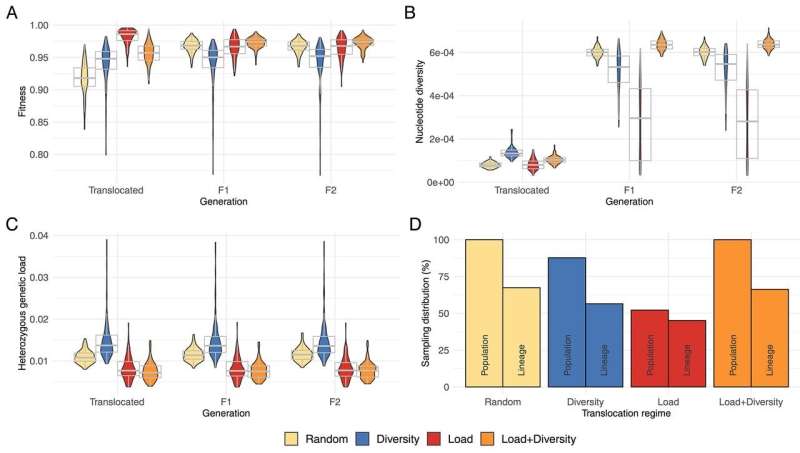Genomics-informed decisions can help save species from extinction

Researchers in Lund, Copenhagen and Norwich have shown that harmful mutations present in the DNA play an important—yet neglected—role in the conservation and translocation programs of threatened species.
"Many species are threatened by extinction, both locally and globally. For example, we have lost about ten vertebrate species in Sweden in the last century. However, all these species occur elsewhere in Europe, which means that they could be reintroduced into Sweden. Our computer simulations show how we could theoretically maximize the success of such reestablishments," says Bengt Hansson, biologist at Lund University.
In a new study published in Science, the researchers investigated which individuals might be most suited for translocation to new populations. To date, conservation geneticists have opted to select the most genetically variable individuals. However, the authors argue that is important to consider what type of genetic variation is being move around. Using computer simulations, they showed that harmful mutations present in the genome of translocated individuals can cause problems in future generations. This so called "mutation load" could jeopardize the viability of the new population in the long run and eventually led to extinction.
According to Hansson and van Oosterhout, geneticist at University of East Anglia, Norwich, who led the study, the best choice is to exclude individuals with many harmful mutations, whilst at the same time, selecting individuals from multiple different source populations.
"Active translocation of animals between localities is sometimes the last option available to conservation biologists. By carefully selecting individuals based on their low mutation load, we can minimize the loss of fitness that is normally associated with inbreeding in small populations," says Bengt Hansson.
Huge advances have been made in DNA sequencing technologies, and the whole genomes of individuals can now be sequenced for relatively little costs. This opens up new possibilities to improve the conservation management of threatened species.
"For many species of mammals and birds, we now know which mutations are harmful. Similar mutations are also found in humans, so we understand what they do, and hence, we know what to look out for when analyzing the sequence data of those species. The advantage of using DNA sequencing is that we can see these mutations in the genome, even if an individual carries just a single copy of the mutant gene. This means we can select against those bad mutations even before they cause a problem. Our computer model shows that at least theoretically, this ensures the best probability for population survival. This could help conservation managers in picking the optimal individuals of a threatened species for translocation into a new habitat," says van Oosterhout.
More information: Bengt Hansson et al, Comment on "Individual heterozygosity predicts translocation success in threatened desert tortoises", Science (2021). DOI: 10.1126/science.abh1105
Journal information: Science
Provided by Lund University





















